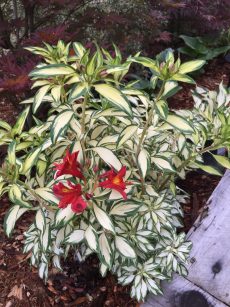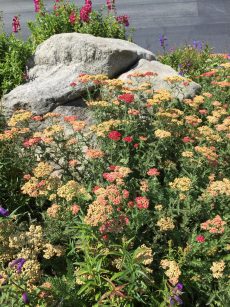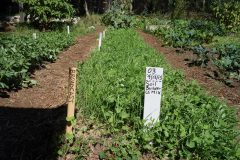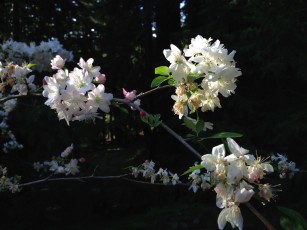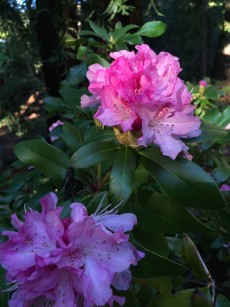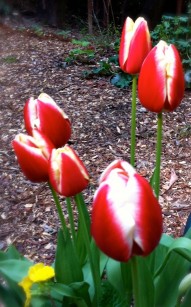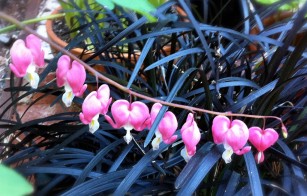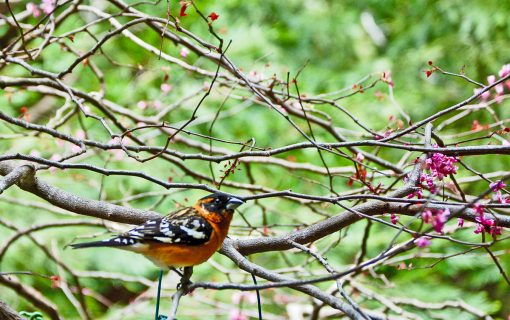
Just like the swallows that return each year to Capistrano I can set my own calendar by the Black-headed grosbeaks arrival in my garden. Although they eat a lot and dominate the feeders for several months I enjoy their antics. With vibrant orange, black and white coloring I could watch them all day. They are the clowns of the bird world and signal that spring is truly here and I better get to finishing up my garden chores. Everything is growing gangbusters these days with all the abundant rainfall.
Fertilize -Take advantage of the moist soil to fertilize your garden. I use an organic balanced granular fertilizer on everything. Your citrus may be looking yellow from lack of nitrogen which has leached out of the soil through the winter season and they may be lacking in iron. Perennials benefit from both a fresh layer of compost and a light application of balanced fertilizer. They respond to the phosphorus from bone meal especially in the spring for root growth, stem sturdiness and flower development. Make sure you keep fertilizer off the foliage and crown of the plants or wash it off with the hose. Wait to feed azaleas, camellias and rhododendrons until after they bloom and you see new leaves emerging.

Transplant – If you need to move or divide any plants that have outgrown their space or are not growing with other plants of the same water usage now is a good time. Plants are full of growth hormones and recover quickly from transplant shock. As you plant new additions to the garden add organic matter to the soil. If your garden’s soil is sandy, organic matter enriches it allowing it to hold water more efficiently. If your soil tends toward clay, organic matter will loosen it up and improve drainage. In well-amended soil, plants grow deep roots, are hardier for cold, more resistant to disease and more drought tolerant.
Spread fresh compost or wood chip mulch around all your plants to help plants get off to a strong start. Good soil is the secret to successful gardening. The first principle of organic gardening is to feed the soil and it will feed the plant. Remember that all gardening used to be organic. Layer 2-3″ of compost or wood chips on top of the soil letting it slowly decompose and filter down into the soil. Bark nuggets and shredded bark do not increase your soil’s fertility like compost or wood chips but they at least conserve moisture and help keep weeds at bay.
Check for aphids – They may be out in full force sucking plant juices from the tender new leaves of everything from roses to hellebore to Japanese maples. A strong spray from the hose may be enough to dislodge them. If they still persist, you can spray organic insecticidal soap, neem oil or horticultural oil to kill them. As with all pesticide sprays, do this early in the morning or later when they are not in the sun. Be sure to test first to make sure the spray doesn’t burn the new growth and always mix according to the directions.
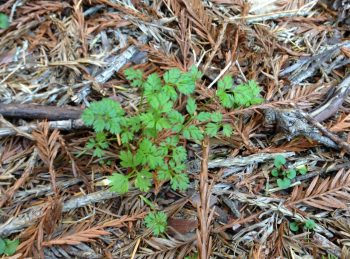
Weed while the soil is moist and before weeds have gone to seed. Even if you don’t get the entire root of more persistent weeds, just keep pulling at the new growth. Eventually, the plant will give up having used up all of the food stored in its roots. I?m still battling hedge parsley with it?s sticky seed balls that cling to my shoelaces and the dog?s fur if I don?t get it before it sets seed. I?ll be out there again this spring pulling them.

The most important to-do for early spring is to take time out and enjoy your garden and our beautiful surroundings. Those last few weeds will be there tomorrow but you’ll never get another today.

